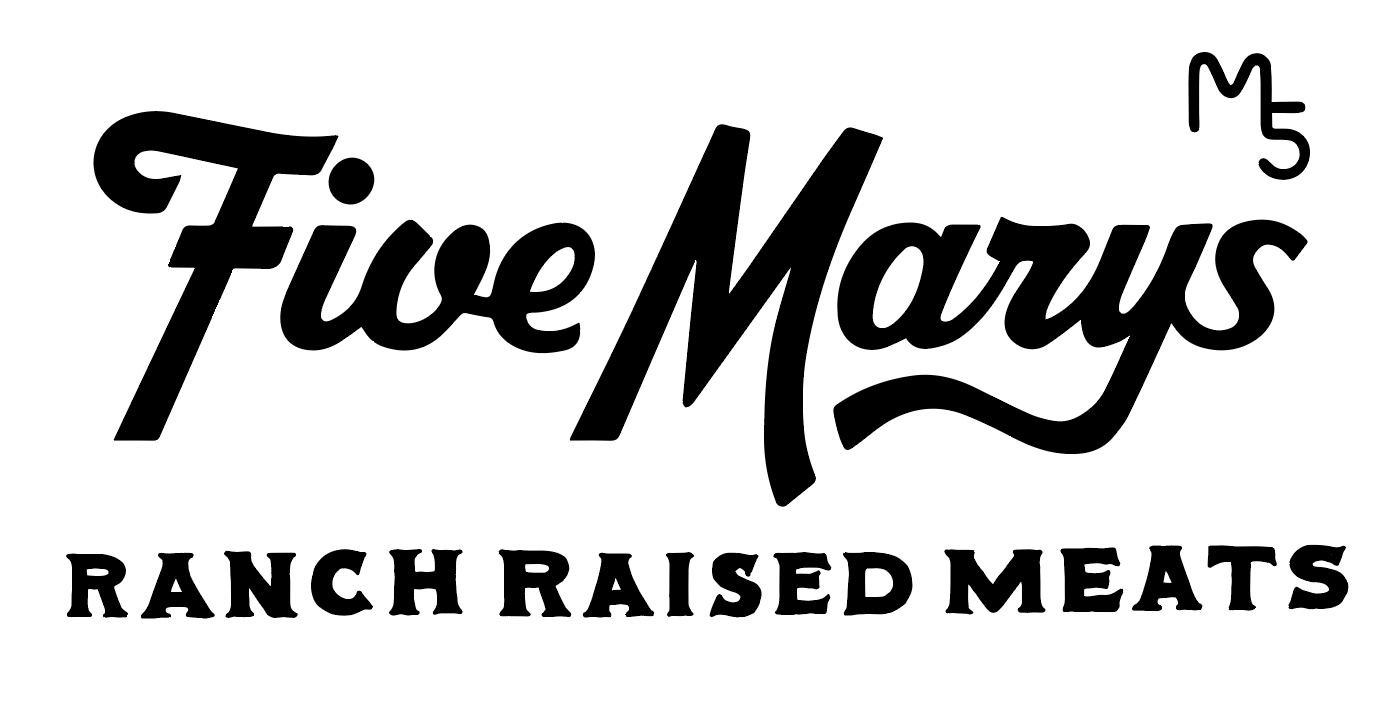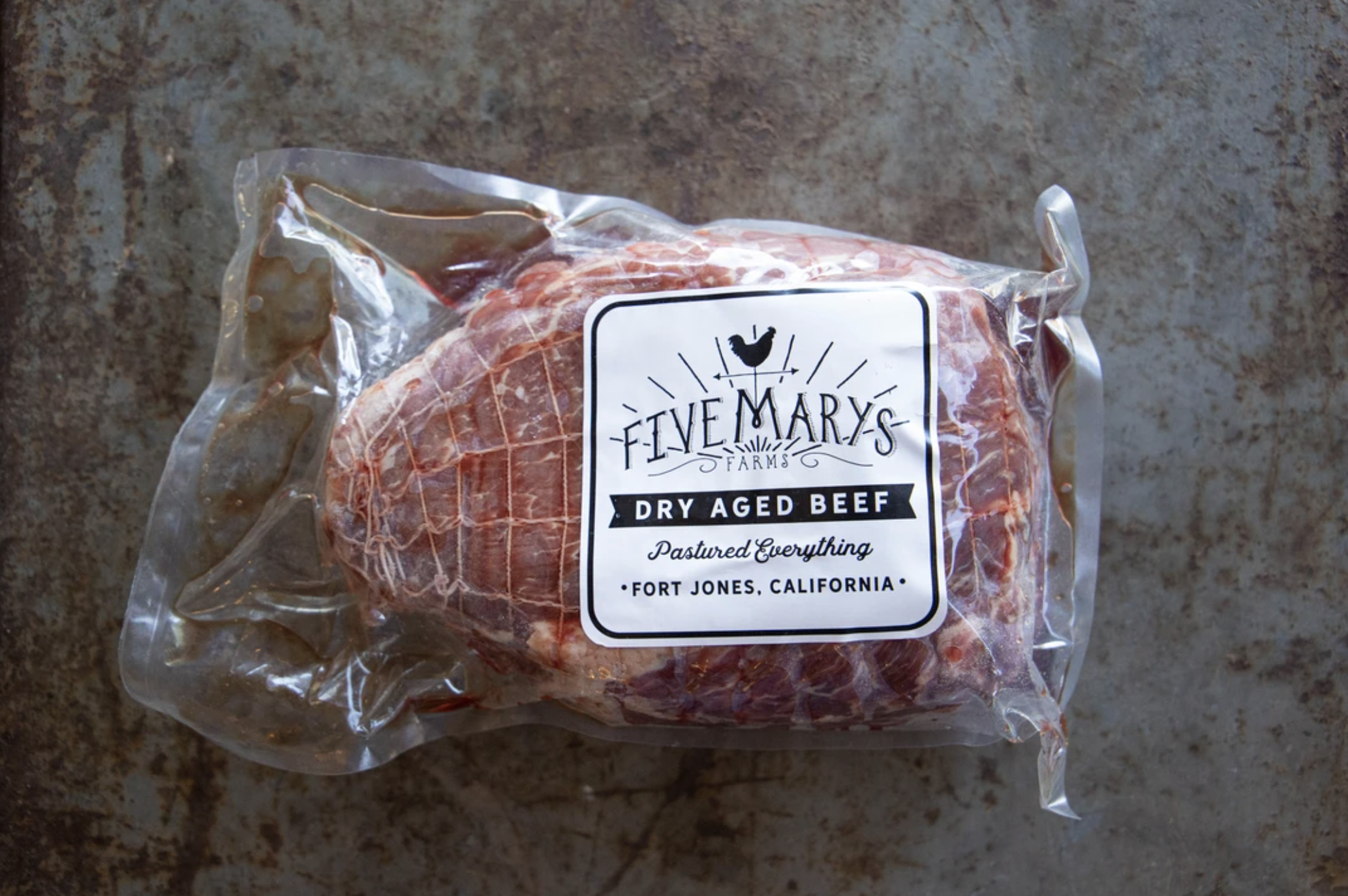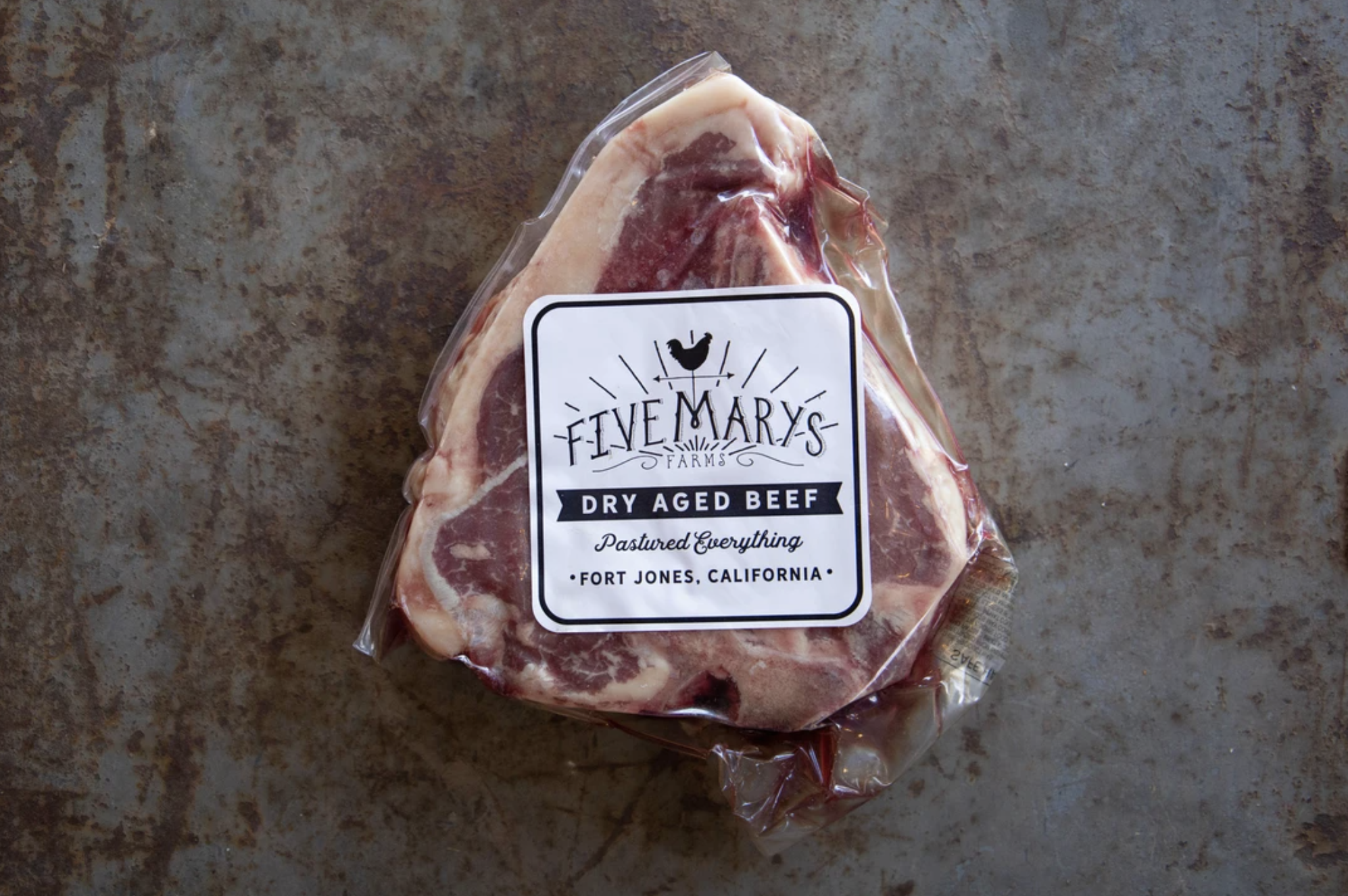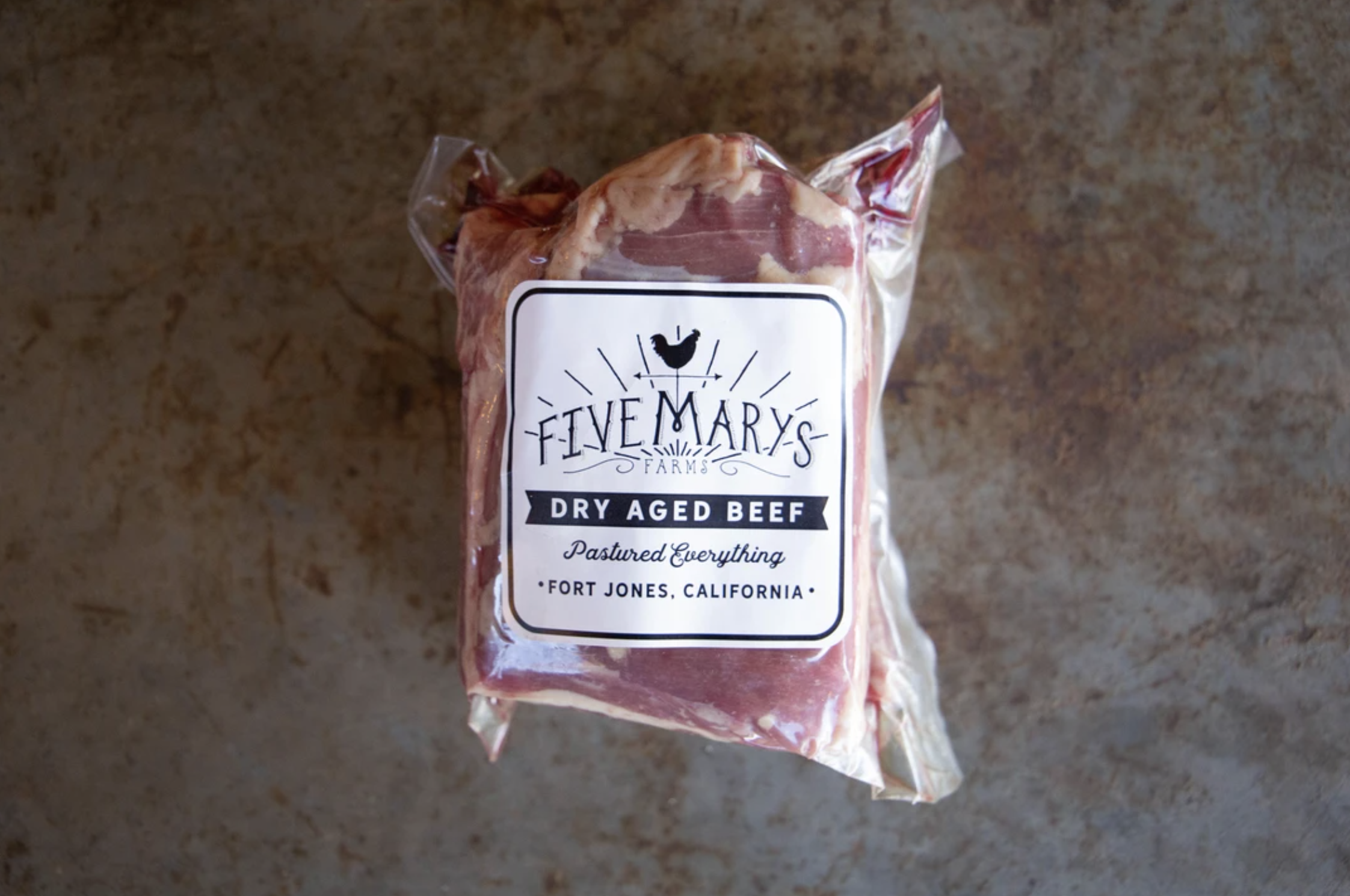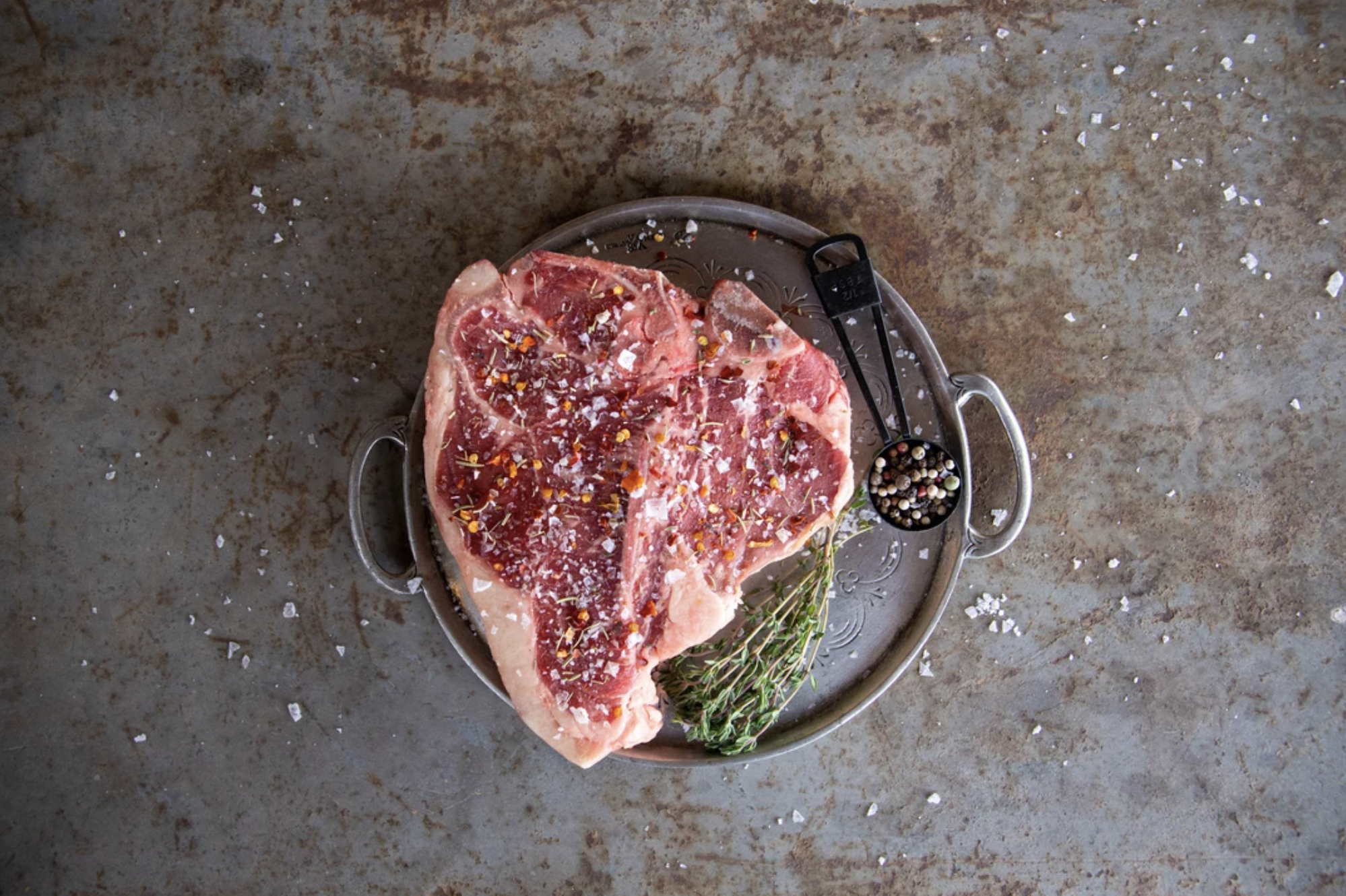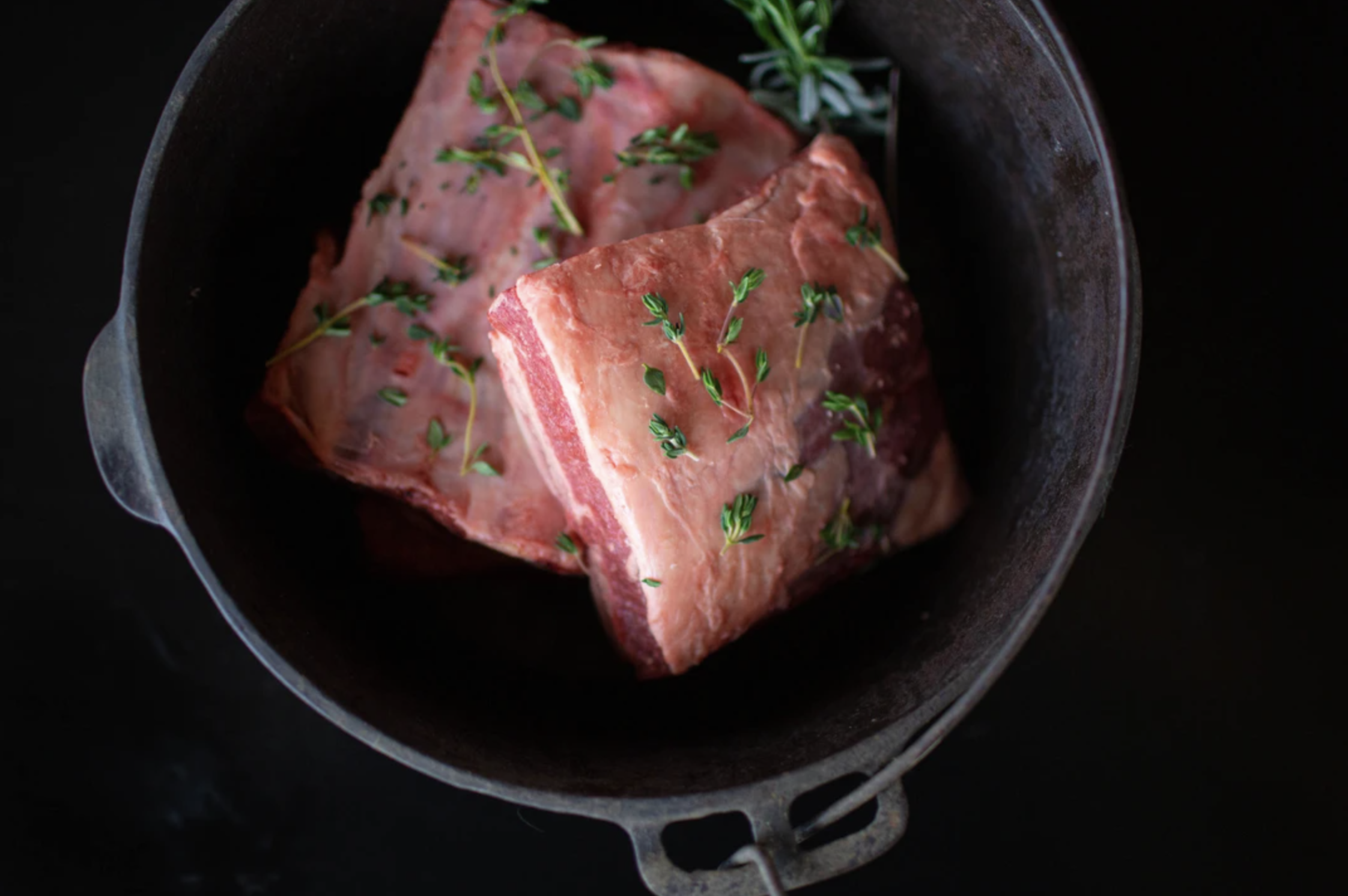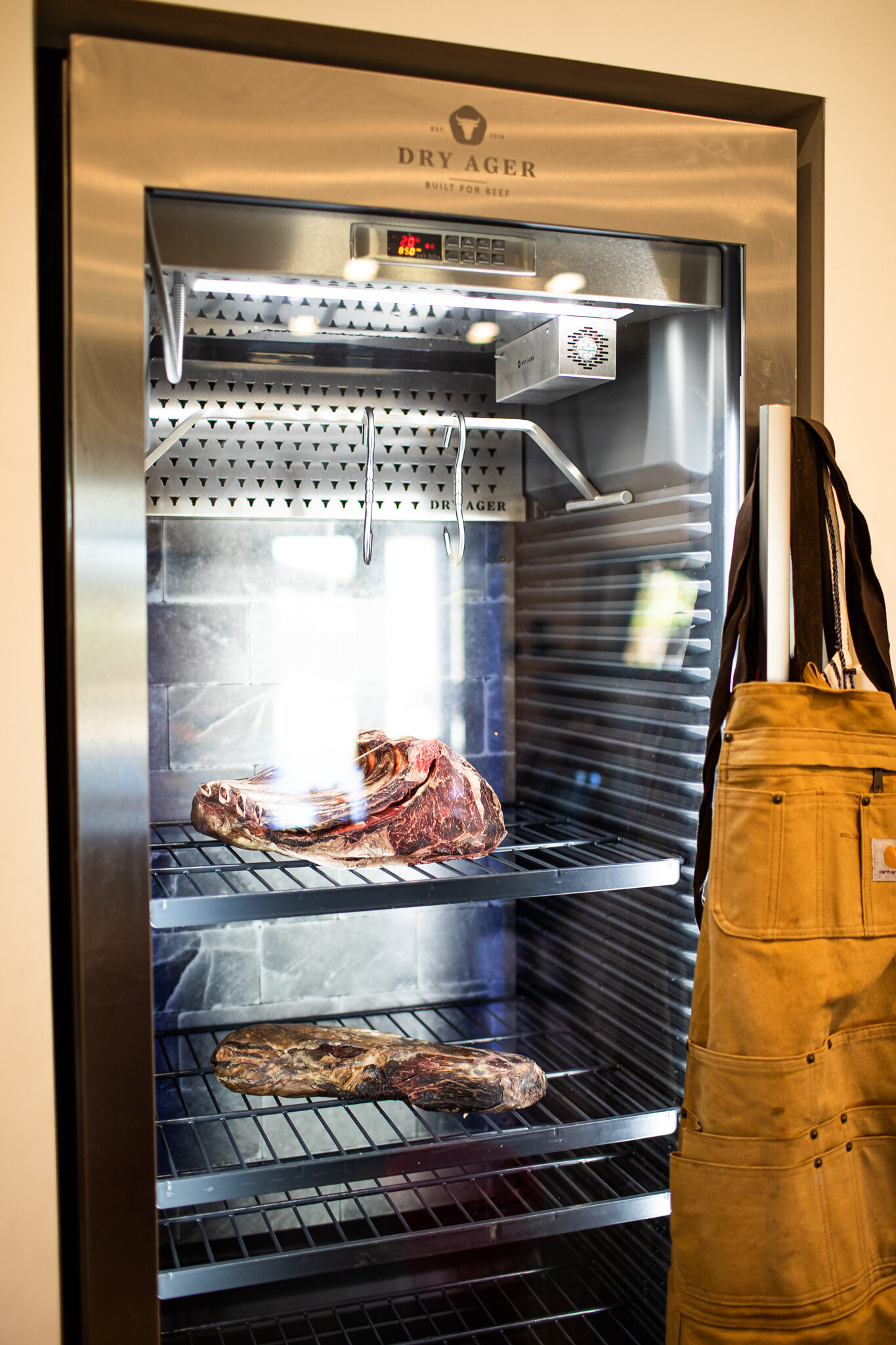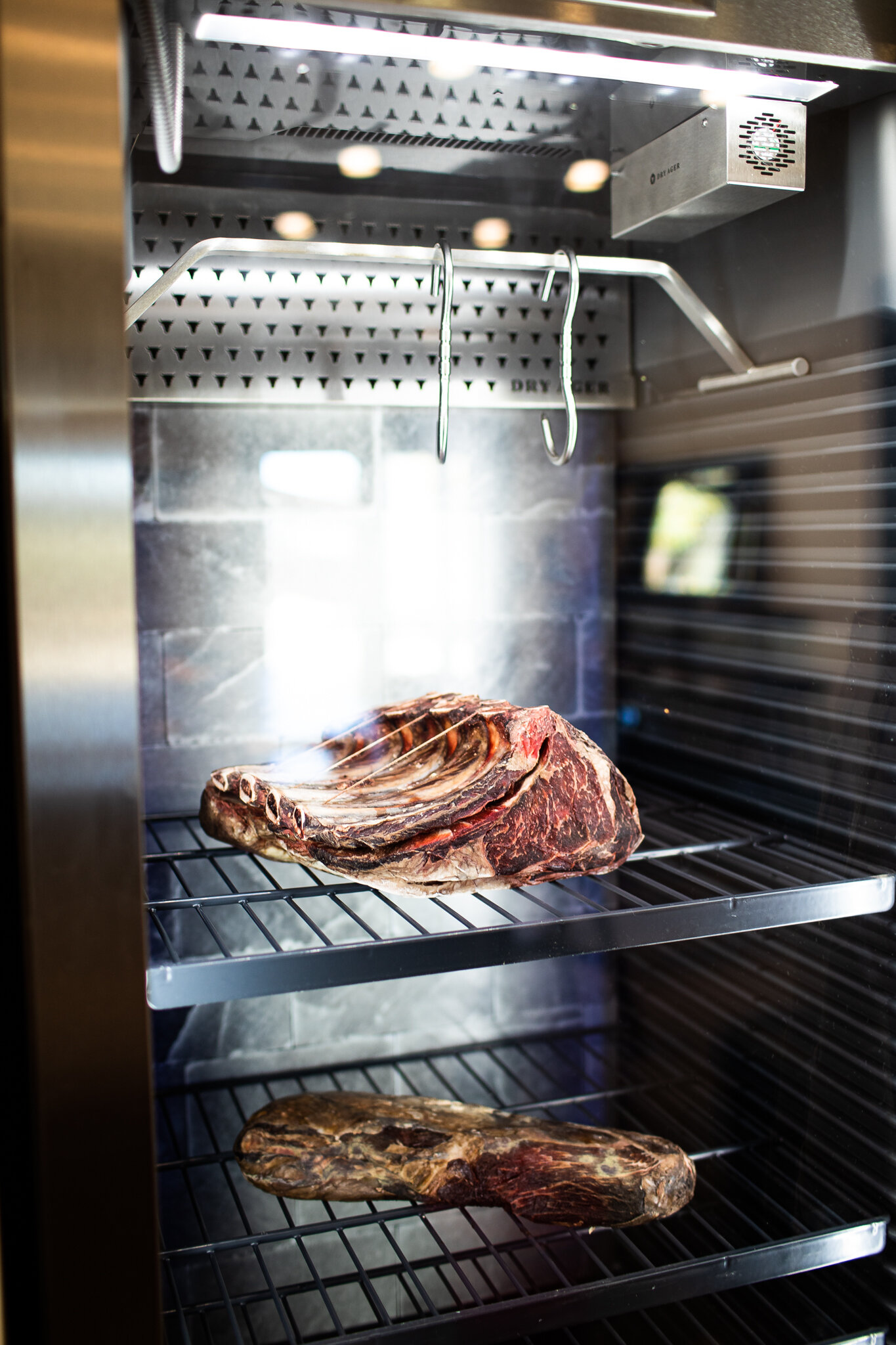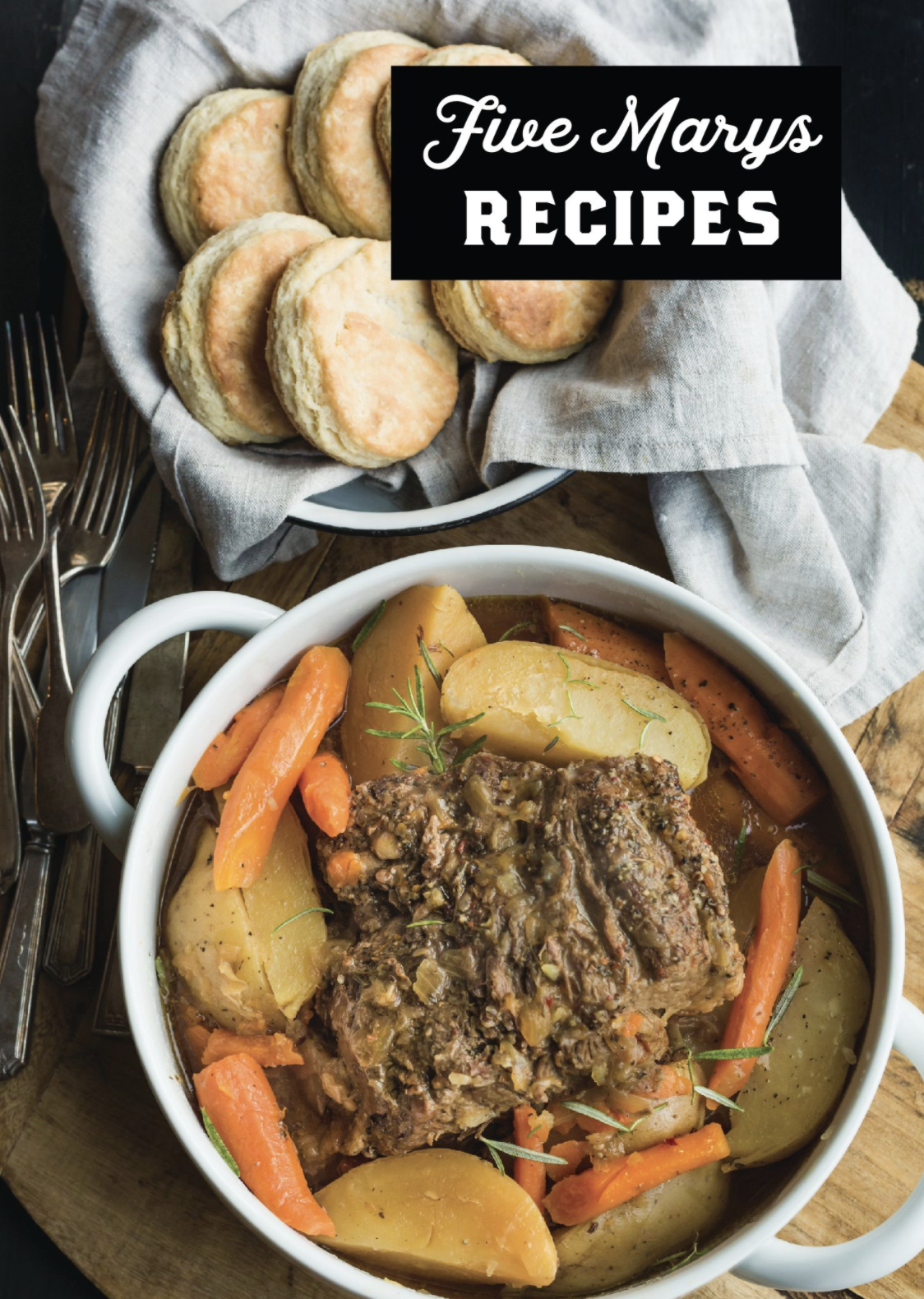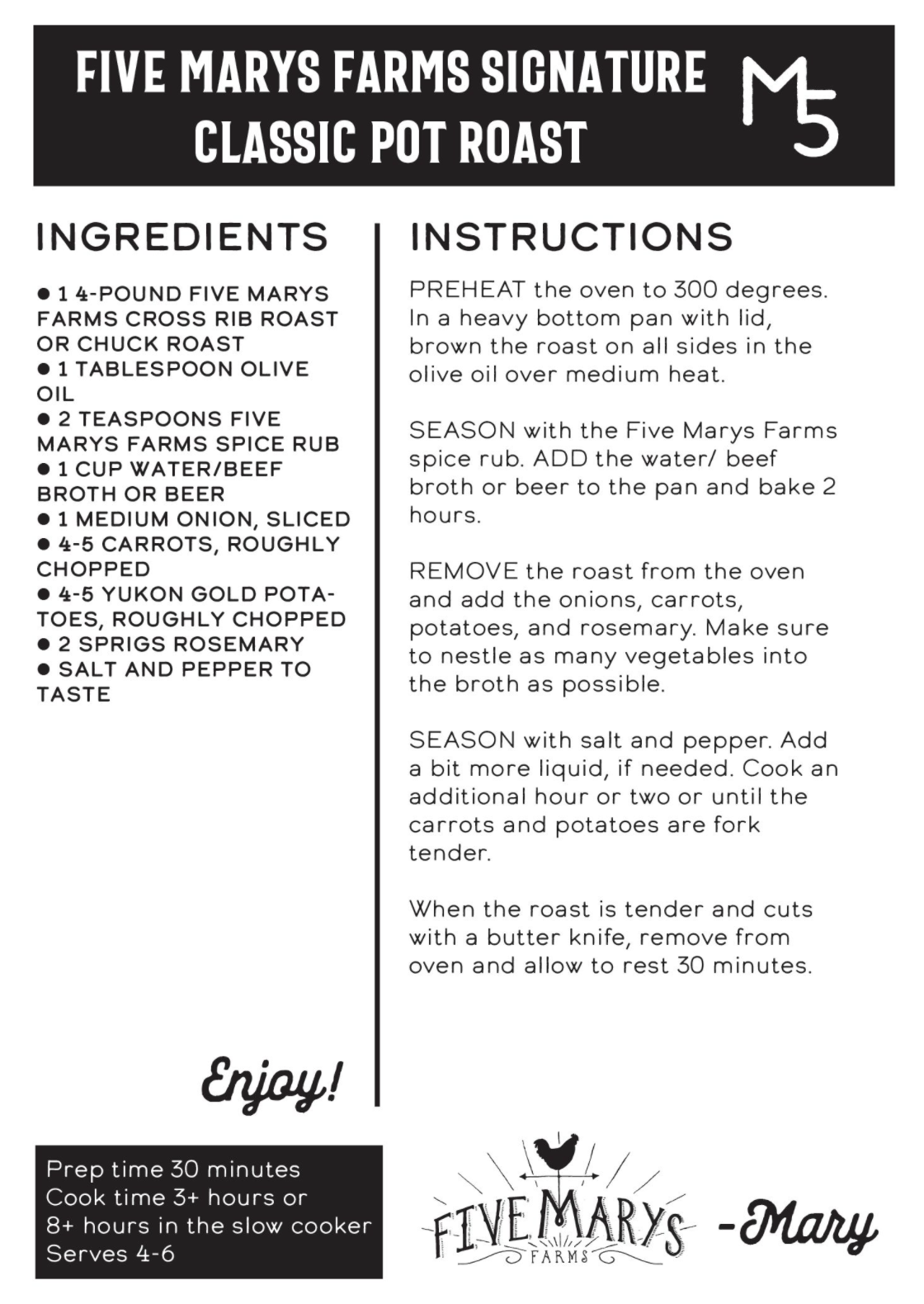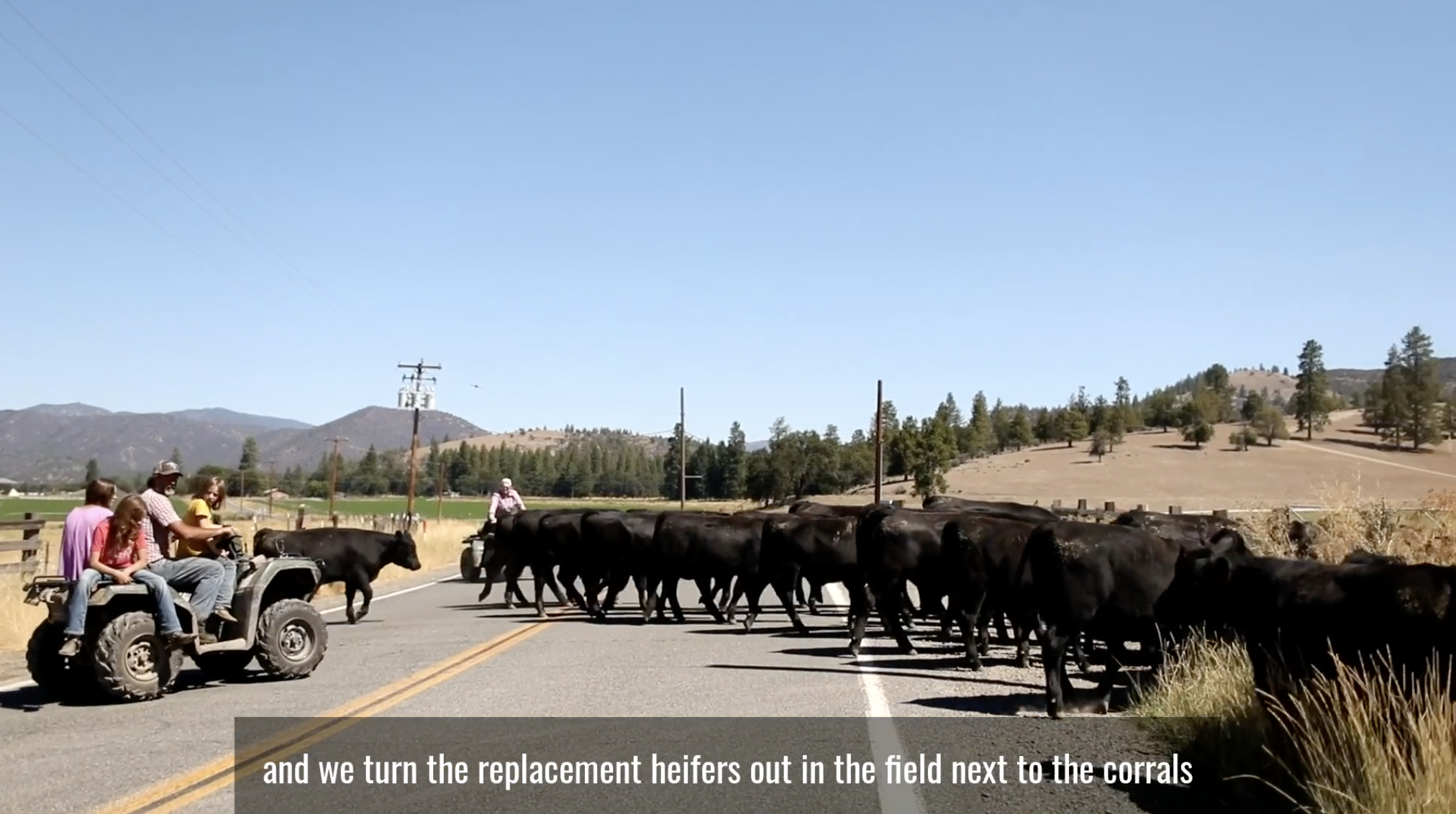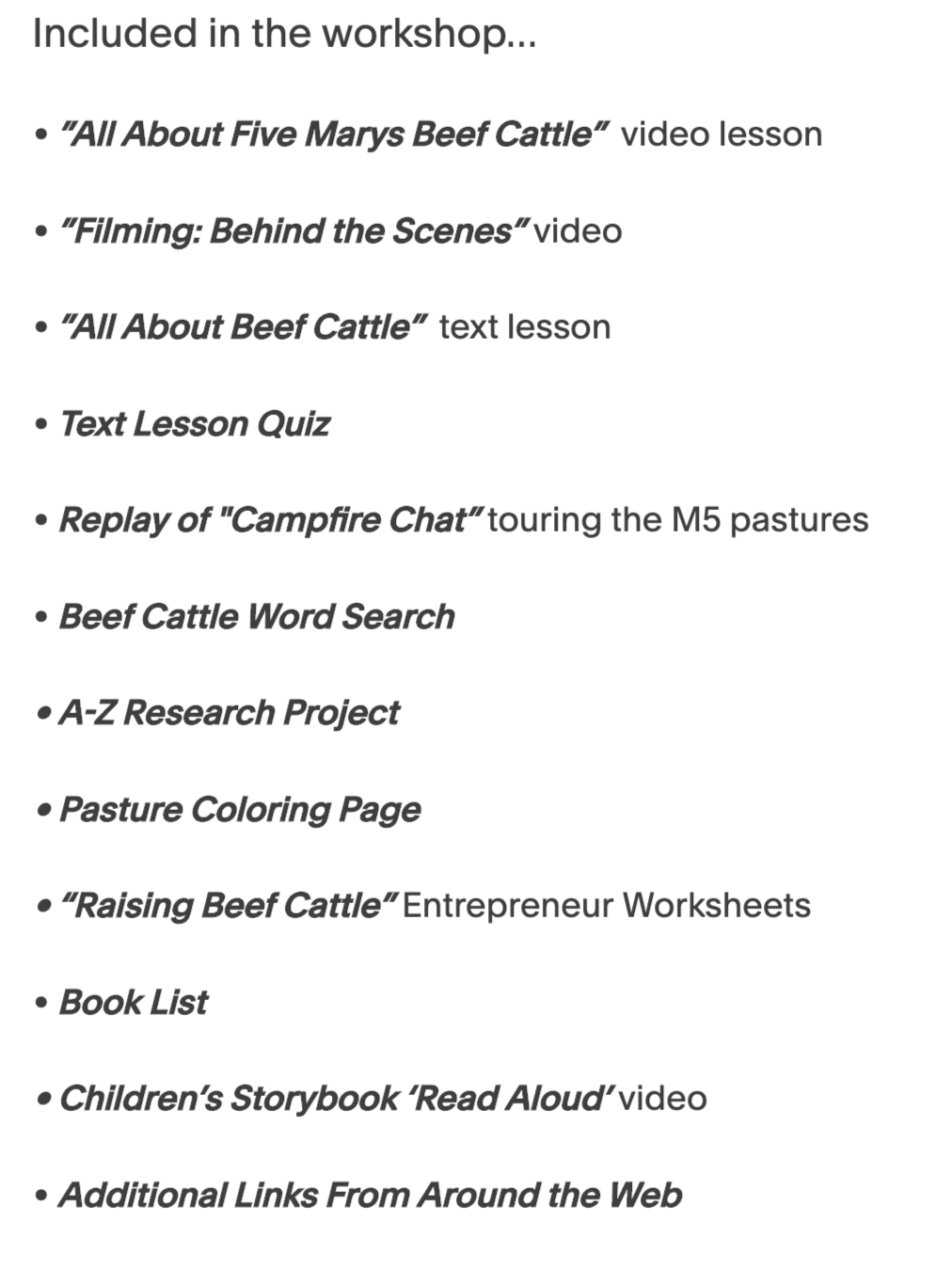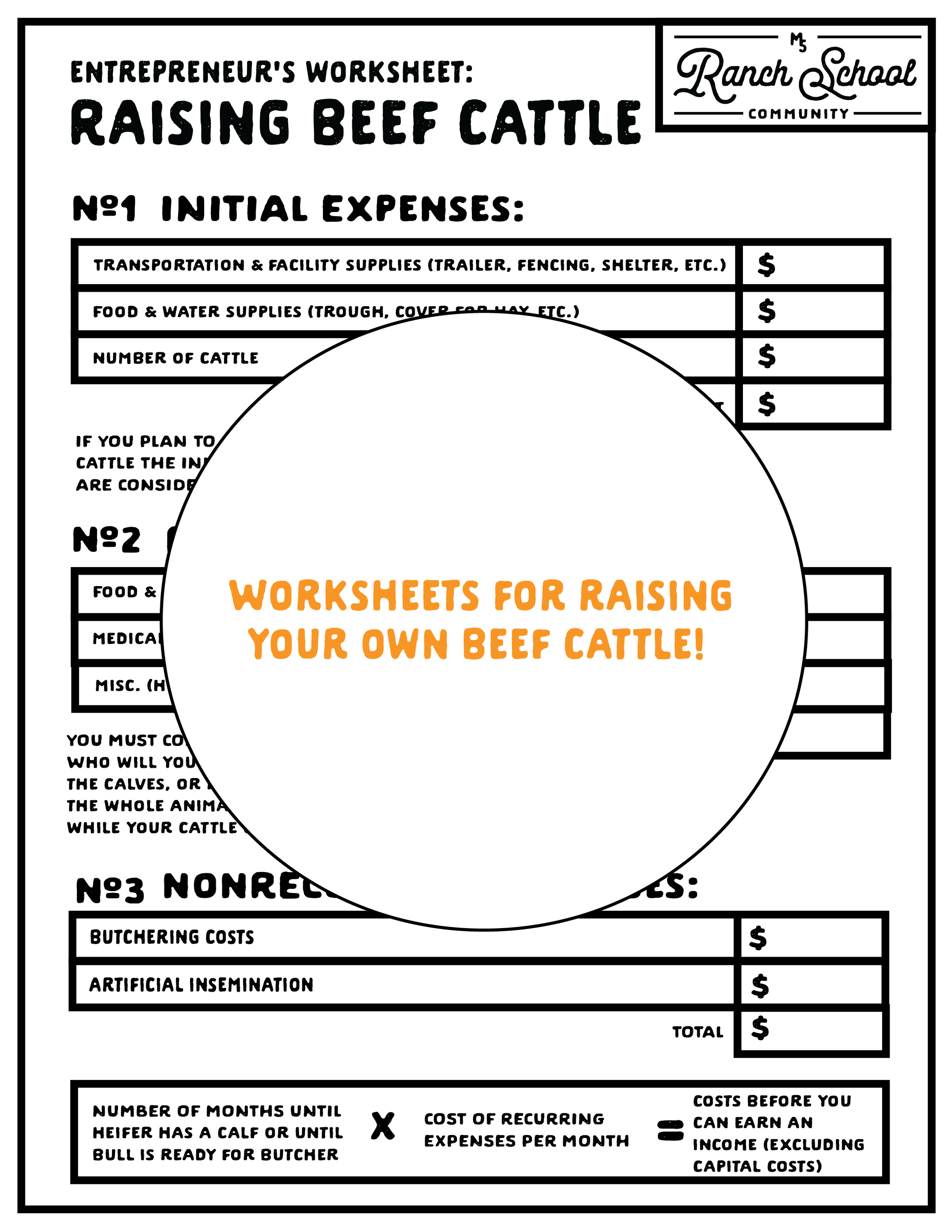Dry-Aging & Beef Tenderness
If you’re not someone who is used to cooking different types of meat, the process to start can sometimes be a bit intimidating!
Is it undercooked? Is it overcooked? What makes beef tough or tender? What is dry-aged beef? What type of cut should I use for certain recipes?
Today, we’re going to cover some of the questions that we get asked quite often here at Five Marys and hopefully help you become a little more knowledgeable on all things MEAT, and specifically beef!
Dry-Aging: A Craft Tradition
Dry-aging meat is a craft tradition that used to be the norm, but is slowly being phased out commercially in favor of expediency and efficiency.
Brian and I firmly believe that dry-aging creates the best possible beef with that amazing “steak house” taste and tenderness every time. The search for the BEST quality meat to serve in our restaurants is what led us to become ranchers!
We don’t cut a single steak or grind any meat until the entire carcass is dry-aged for 21 to 28 days after harvest.
This, along with great genetics on our cattle and an extended finish on alfalfa, grasses and steam-flaked barley, is what gives our beef an incredible stand-out flavor. Most tell us it's better than any steakhouse beef they've ever eaten - even our ground beef is dry-aged giving it a truly stand-out and memorable flavor.
Purely grass-fed and finished beef doesn’t always benefit from dry-aging as it is often too lean, but because we finish our cattle on barley, which results in natural marbling, dry-aging is an essential part of what makes our beef unforgettable.
Our cattle live a grass-fed lifestyle and graze our green pastures in the spring, summer and fall. We feed them high quality alfalfa in the winter months and our harvest steers get an extra ration of chopped alfalfa and barley for an extended finish time of 180 days.
This makes all the difference!
Pork or lamb can be eaten soon after harvesting, but that is not the case with beef.
Beef benefits from aging to promote tenderness and enhance flavor.
Shortly after slaughter, most beef sold in the United States is split into large pieces (or “primals”), vacuum-sealed, and boxed up for transport, where it wet-ages in the packaging so as not to lose as much volume during transit into grocery stores, meat distributors, and similar vendors. Upon arrival, it is ultimately portioned into steaks, roasts, and other cuts for the consumer. Ground beef and trim is often packaged and shipped without the benefit of any aging at all.
In contrast, dry-aging beef involves hanging it in a humidity-controlled room with ample air flow at just-above-freezing temperatures for at least 14 days, and sometimes longer.
About 24 hours after slaughter, the muscles of the animal go through a process called rigor. This is when the muscles become rigid and stretch less easily, but dry-aging can be used to improve tenderness and pliability when allowed to hang in a controlled environment for an extended time.
The dry-aging process requires more effort, time, expertise, and expense, but it imparts a unique flavor and delicate consistency to the meat.
Test Kitchen Dry-Ager
The quality of meat, where the cut comes from on the animal, and what cooking method you choose all play a part in the tenderness of the meat. DRYAGER makes an awesome in-home or commercial unit that allows anyone to dry-age meat right in their home in a way that makes storing and aging beef feasible and safe.
Here at Five Marys, we have the the DRYAGER UX 1000 built-in to the kitchen (but it works just fine as a stand-alone unit you can put in a garage or anywhere!) to hold bigger primal cuts and dry-age everything from bigger beef cuts, charcuterie, salami, etc.
Some cool features of this DRYAGER home unit :
*STERILIZED EVERY MINUTE : The active UVC-ventilated-disinfection system sterilizes all of the air in the fridge every minute. As a result, germs and bacteria don’t stand a chance.
*HIGH PRECISION HUMIDITY CONTROL : Thanks to HumiControl the humidity can be regulated with high precision from 60 % to 90 % in 0.5 % steps without a water connection or water tank.
*LOW LOSS DURING MATURING : The weight loss of beef due to Dry Aging on the bone is only approx. 7-8 % after 4 weeks and approx. 12 % after 6 weeks. These values are considerably lower than in most other maturing cabinets on the market.
*MICRO TEMPERATURE CONTROL : The precise electronic control of the DRYAGER cabinet ensures that the temperature is constantly maintained, which can be regulated in exact 0.1 °C steps from 0 to +25 °C.
*MULTI USAGE : Dry Ages more than just meat. With the DRYAGER cabinet you are flexible. Ham, Salami, Charcuterie, Cheese, Fish and much more. Dry Aging in the DRYAGER fridge you achieve an incomparable taste of meat. For the best meat in the world.
All of our meat we sell at Five Marys already benefits from a dry-age "on the rail" immediately after harvest for 21-28 days. But we love to use our DRYAGER at home to experiment with even further aging and tasting the differences in certain cuts over others. The more clean white fat in a cut, the better the dry-aging process works and the better the FLAVOR!
We also have the smaller DRYAGER UX 500 and love the versatility of the smaller unit for tabletop dry-aging and charcuterie! It's a great size for an in-home unit and looks beautiful in any kitchen or work space.
We get to share the code "5MARYS20" for 20% off the UX500 and the UX1000 Residential models - plus FREE SHIPPING and a FREE XL ACCESSORY PACKAGE!
BEEF TENDERNESS
Tenderness has a lot to do with the age of the animal and the amount of exercise it receives. Basically, the more a muscle is used, the tougher it will be. For this reason, younger animals typically provide more tender meat. Here on the ranch, our beef cattle spend their days out in pasture, grazing for food. Therefore, they naturally receive a lot of exercise which results in well developed, tough muscles. For example, a steer’s large muscles around his legs and shoulders are used often for movement and support, resulting in tougher cuts such as the flank, round, brisket, and chuck. Muscles that are less often used for exercise, such as ones high on the back, produce tenderloin cuts.
Wondering about a certain cut of meat? Check out our ‘meat map’ post which contains detailed information on EACH ‘cut of the cow' and recipe ideas for each one!
Another key component of meat tenderness are the connective tissues. Elastin is the protein that makes up ligaments and silverskin (sheets of white fibrous tissues). Elastin appears as a yellowish color and will usually be removed by the butcher, because no matter how you cook it, fibers of elastin are not tenderized by moist heat and will always be chewy and rubbery.
Collagen surrounds individual muscle fibers and is also found in tendons that attach muscles to bone. Collagen connective tissue appears pearly white. Less tender cuts of meat will benefit from cooking with moisture, since when heated, collagen connective tissue will start to melt away.
Low & Slow Cooking
‘Low and Slow’ cooking refers to the low cooking temperature and the slow cooking time used to cook your meat. The tougher the meat, the more it benefits from low and slow cooking or braising (cooking in a covered pot with a small amount of liquid).
Collagen connective tissues will begin to dissolve when cooked for several hours between 160F - 250F. When cooked ‘low and slow’ at these temperatures, the collagen will melt into a gelatin, creating tender and succulent meat.
This type of braising or cooking "low and slow" works best for tougher cuts (where the muscles are more active) like the cross-cut beef shanks pictured above, short ribs, roasts, etc.
Recipe for Five Marys ‘Braised Osso Buco’
Pounding
Tenderloin cuts (such as flat iron steak) don’t contain much collagen, which is why they are able to be cooked quickly. In fact, if tenderloin cuts are cooked for too long, the muscle fibers will become tough and dry. Pounding the meat with a meat mallet is a great way to break down the muscle fibers, making the meat more tender and easier to cook.
This technique works well on the less desired cuts (more economical) like round steaks.
Recipe for Five Mary’s ‘Chicken Fried Steak with Country Gravy’
Let’s Eat!
It doesn’t get much better than having a hot crock pot meal ready at the end of a chilly fall day. It’s so convenient and makes the whole house smell delicious. If you’re looking for some slow cooker recipe ideas, give our ‘Signature Classic Pot Roast’ a try!
All About Beef Cattle
Want to learn more about beef and where it comes from? Check out our Ranch School workshop ‘All About Beef Cattle!’
CLICK HERE for the full M5 Ranch School “All About Beef Cattle” Workshop!
